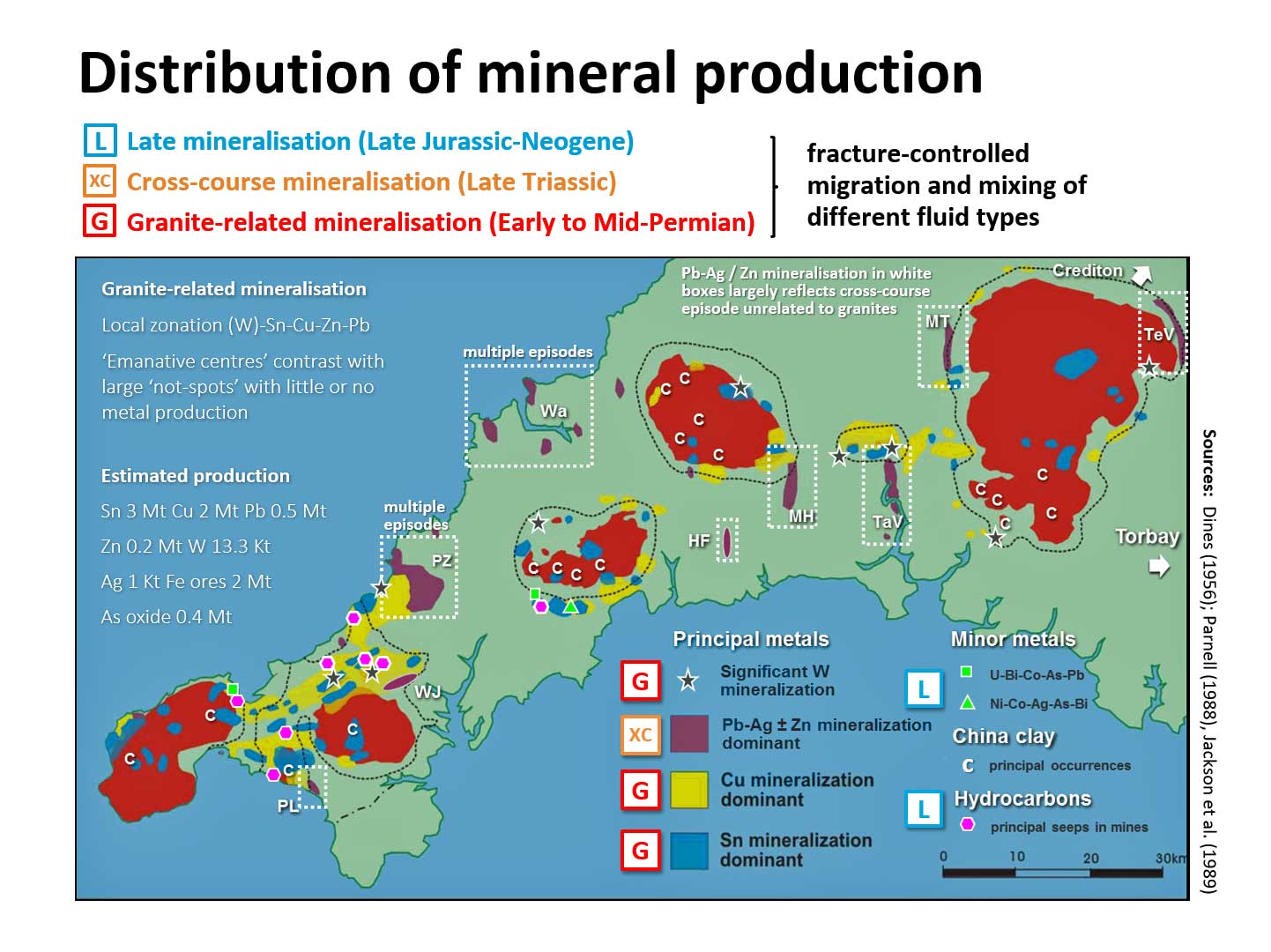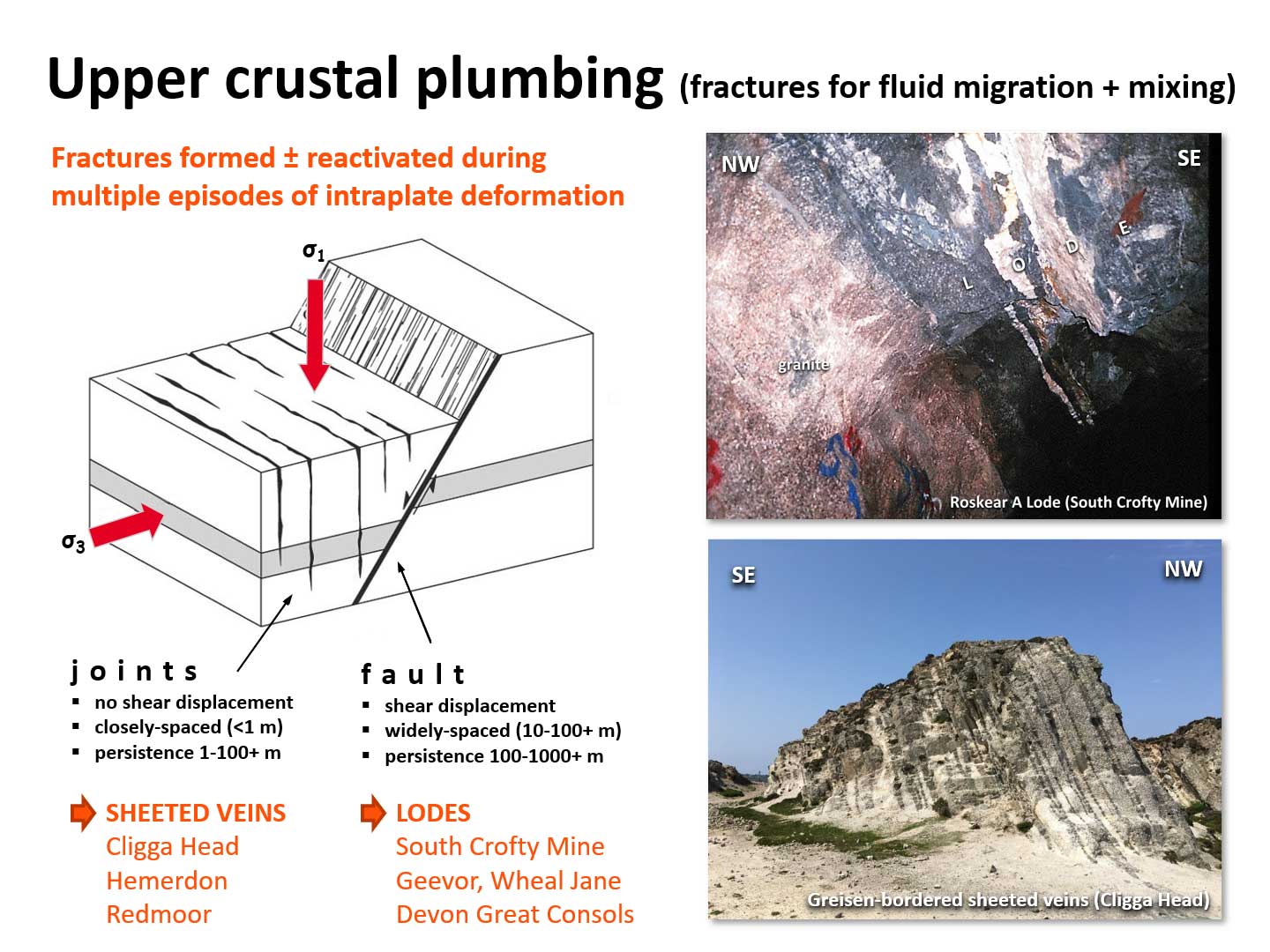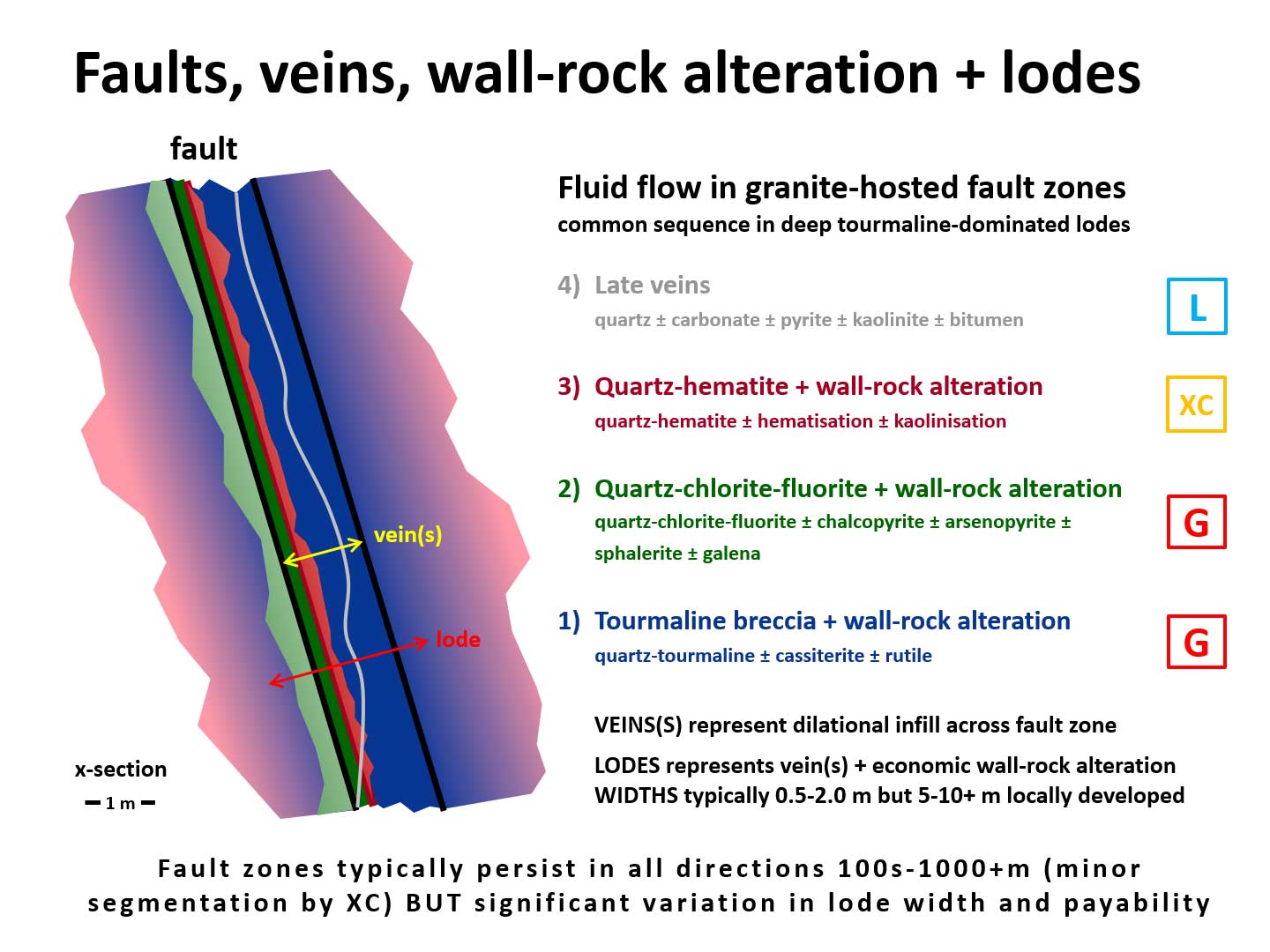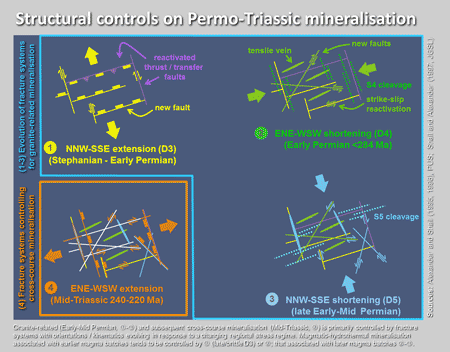- Homepage
- Key Information
- Students
- Staff
- PGR
- Health and Safety
- Computer Support
- National Student Survey (NSS)
- Intranet Help
Prof Robin Shail
SW England mineralisation
Distinct episodes and styles of mineralisation reflect the regional tectonic evolution of SW England (view 'metals + rocks' row in table).
Syn-rift mineralisation (Early Devonian - Early Carboniferous)
Devonian and Early Carboniferous syn-rift successions locally host low grade / tonnage SedEx and VMS mineralisation styles that subsequently underwent Variscan deformation and low-grade regional metamorphism; some was locally remobilised within . . .
Late-orogenic mineralisation (Latest Carboniferous - ?earliest Permian)
Late-orogenic shear zone quartz-Sb-Au + base metal veins associated with late Variscan (latest Carboniferous-?earliest Permian) NW-SE strike-slip transfer faults, active during thrusting and early extensional recativation, are best known from North Cornwall but occur more widely (e.g. Camm et al., 1996), such as within the 'killas' in the Dolcoath section of South Crofty Mine, and typically have grades of up to 1-2 ppm Au over 0.2-0.3 m intersections.
Granite-related mineralisation (Early - Mid Permian)
Of overwhelming historical, and continuing present / future, economic significance are the Early-Mid Permian magmatic-hydrothermal W-Sn-Cu-Zn-Pb vein deposits associated with the Cornubian Batholith. The role of partial melting and fractional crystallisation in controlling variable melt enrichment in Li, Be, Ga, Nb, Ta, In, Sn, Sb, W and Bi across the different Cornubian granite suites (G1-G5) was modelled by Simons et al. (2017); Sn and B distributions were modelled by Williamson et al. (2010).
 Click image for larger version
Click image for larger version
Emplacement of these variable composition magma batches during pluton construction was associated with the release of enormous volumes of magmatic-hydrothermal fluids. These migrated through actively propagating, tectonically-controlled, extensional / strike-slip fault and joint systems and mixed to varying degrees with meteoric and other fluids (contact metamorphic / red-bed brines).
Click image for larger version
The resulting mineralisation occurs both in the granites and their host rocks and may include multiple parageneses in zones of repeated fluid mixing. Quartz tourmaline cassiterite parageneses from the largely unmineralised southern lobe of the Land's End Granite are described by LeBoutillier et al. (2002). Polymetallic quartz-chlorite-sulphide-fluorite metasedimentary rock hosted assemblages from near surface in South Crofty Mine have been described by LeBoutillier et al. (2000) and across the province by LeBoutillier et al. (2003).
Click image for larger version
The occurrence of a mantle helium signature in most magmatic-hydrothermal parageneses was outlined by Shail et al. (2003). A comprehensive description of indium mineralisation across SW England was provided by Andersen et al. (2016). Preliminary reports of the geological factors that influenced the formation of the world-class Hemerdon W-Sn deposit, being worked by Wolf Minerals, have been provided by Shail et al. (2017) and Tapster et al. (2017).
Cross-course mineralisation (Mid-Triassic)
Mid-Triassic 'cross-course' mineralisation, related to the migration of 'red-bed' basinal brines through granites and their host rocks, also occurs within the mafic/ultramafic rocks of the Lizard Complex (Power et al., 1997). A record of mining wastes within the contemporary sediments of the River Teign, largely related to cross-course mineralisation, is described by Simons et al. (2011).
Structural controls on mineralisation
The variable orientation of veins hosting granite-related magmatic hydrothermal mineralisation and basinal-brine cross-course mineralisation is partially explained by changing regional and local palaeostress regimes during the latest Carboniferous-late Triassic (Shail and Wilkinson, 1994; Alexander and Shail, 1995; Alexander and Shail, 1996; Shail and Alexander, 1997); see figure below. A preliminary evaluation of lineaments across SW England, using Object-Based Image Analysis, has been presented by Yeomans et al. (2018).
Estuary sediments
A record of granite-related and cross-course mineralisation, as well as china clay extraction, is preserved in estuary sediments around SW England; there are also some really interesting diagenetic minerals. A concise readable overview is provided by Pirrie and Shail (2018).



